The results of an investigation of a fatal accident indicate that the successful deployment of a bottom mounted reserve may have been impeded by the speed bar or stirrup.
Speed bars or stirrups must not be allowed to foul the reserve container on all harnesses where the container is mounted under the seat. Should the speed bar or stirrup be under the container at deployment, this may well result in the reserve not being released correctly, or not deploying at all. An uncontrollable pilot position may result, should the reserve parachute open after passing through the speed bar, or the reserve attachment sling may become severed due to excessive friction with the speed bar.
The following picture sequnence illustrates the danger.
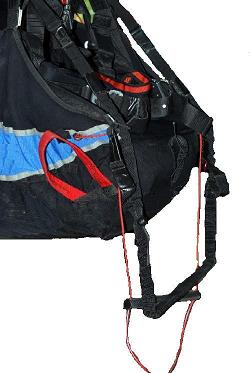 |
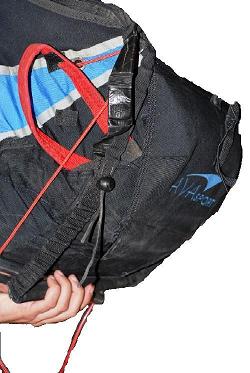 |
| Picture 1: Speed bar (red) and stirrup (black) while not in use (speed bar lines attached to front risers). |
Picture 2: Due to wind resistance, the speed bar and stirrup are blown under the reserve container. |
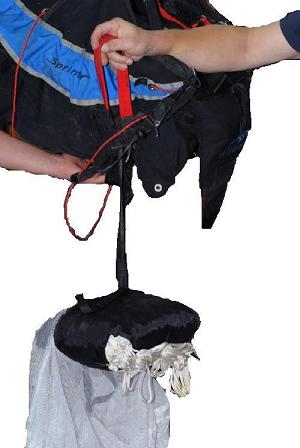 |
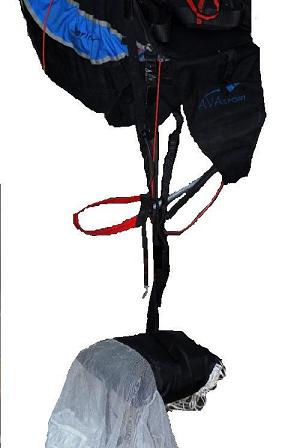 |
| Picture 3: On reserve deployment, the parachute falls through the speed bar and stirrup. |
Picture 4: The reserve inner container may become tangled and prevent or delay opening |
Correct installation of a speed bar:
The speed bar must not be installed as shown in picture 5. The spped bar must be installed such that no fouling of the reserve container is possible, even when it is not being used (see Picture 6).
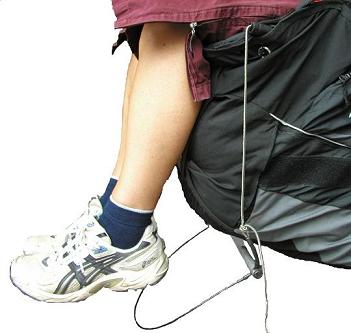 |
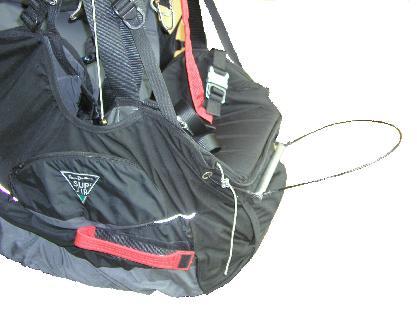 |
| Picture 5: Wrong installation of a speed bar. The speed bar can foul the reserve container. |
Picture 6: Correct installation. When not in use, the speed bar is pulled back to the front edge of the harness seat, and does not foul the reserve container. |
Should the speed bar design not allow for a correct installation, the manufacturer of the harness should be contacted, and an appropriate retrevial system mounted.
Stirrup installation:
Stirrups which foul the reserve container when not in use are life threatening!
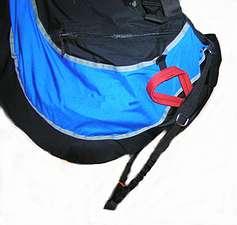 |
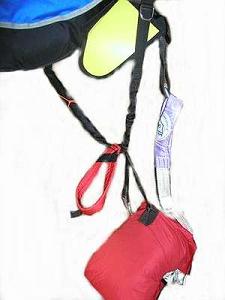 |
| Picture 7: Wind resistance forces the stirrup under the reserve container... |
Picture 8: ...and prevent it from deploying. |
Stirrups which have a built-in seperator do not suffer from this problem - on reserve deployment, the stirrup is automatically released on one side, so that it cannot foul the container.
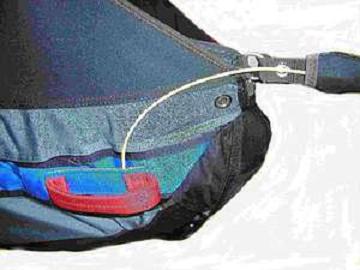 |
| Picture 9: Stirrup with seperator: on reserve deployment, the stirrup is also released via a split on one side. |
The DHV issues the following safety advisory:
Paraglider harnesses with reserve containers mounted under their seats must be checked by their owners to ensure that no fouling of the container is possible by either a speed bar or stirrup. Should the speed bar or stirrup foul the reserve container, then it must be adjusted accordingly, or if this is not possible, then the manufacturer of the harness should be contacted for the fitting of an appropriate retrevial / seperator system. The harness should be checked with the speed bar lines attached to the front risers of the paraglider, as in normal flight.
Stirrups which cannot be seperated, and foul the reserve container, must be removed from the harness as they are potentially life threatening.
The above checks and actions must be performed prior to the next flight.
Gmund, 15.8.08
Karl Slezak
DHV Safety Manager | 
